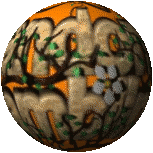I had been giving my bird table occasional glances – having put out some seeds for finches I was hoping that I might see one or two. In our area there has been an influx of many of the larger bird species and whereas we used to have small flocks of finches, sparrows, tits, starlings, wagtails (especially the pied), the odd song thrush or two, a glimpse or two of the dunnock, the local blackbird (which is still ever present), and the resident robin – these all now are pleasures to see. The smaller song birds have all but been squeezed out into oblivion by magpies, crows, jackdaws, doves and wood pigeons … how quick they gambol into the garden and will eat anything that is put out … even though according to many bird books the crow family eats carrion, in our area they will eat cake! Even the doves and pigeons will peck at cockatiel seeds … I know as I have tried varieties that are positively exotic.
Today, another visitor peeped at me from the far side of the bird table … they have been in the garden before but it’s the first time that I have seen one make themselves at home on the bird table. What was it eating? Well I often make porridge (slightly different recipe to the type I like myself – for the birds, hedgehogs and other wild life I make a mixture of oats, animal fat and a little water with the occasional bit of nut or other titbit) which is either spooned into an old coconut shell or shallow tin. Added to this at least today I had crumbled up a few digestive biscuits … but how did the squirrel find out? Does it understand the chatter from the starlings or the cooing of the doves? Or does it simply routinely survey the local patch in the hope of a tasty snack?


























































































